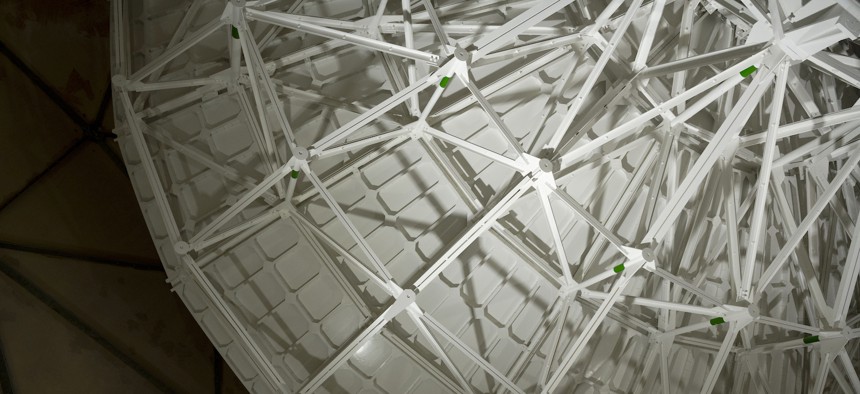AUDREY DECKER

U.S. Space Command wants some of its satellites to be able to maneuver for extended periods in space by 2028, according to a top general.
Satellites with short lifespans and fixed fuel tanks are constraining Space Command’s ability to “do a lot of things we want to do,” said Lt. Gen. John Shaw, deputy commander of Space Command.
The U.S. has been conducting “positional space operations” since the dawn of the Space Age—meaning that when a satellite is launched into orbit, it stays there, Shaw said Thursday at a Mitchell Institute event.
But “we're coming to the realization that that's not going to be sufficient anymore,” he said.
This concept of “dynamic space operations” could be the “most fundamental doctrinal shift” for U.S. space operations in the next four or five years, Shaw said.
Commercial satellites and national security systems, such as missile warning and satellite communications, will likely remain static in their orbits, Shaw said, “but there's an emerging set of platforms that we think have to overcome this positional approach. And they need to probably spend most of their lifetime changing their energy state of maneuvering as opposed to staying in orbit or at least a much, much larger percentage than we do today.”
The Space Force aims to conduct a demonstration of “sustained space maneuver” by 2026 and have an operational platform by 2028, he said.
One of the programs that needs the ability to maneuver, Shaw said, is the Space Force’s space surveillance satellites—called GSSAP, or the Geosynchronous Space Situational Awareness Program.
With GSSAP’s current fuel capacity, Space Command’s ability to respond to a threat or nefarious behavior is “limited,” he said.
“If we saw satellites [acting] suspiciously, but it was sufficiently far enough away from GSSAP platform, it would take us a while to get there, given the limited fuel budget, and it may be determined we just can't get there because it doesn't fit within the lifetime profile of how you’re going to fly satellite,” Shaw said.
Shaw’s command receives direction from the Space Force on how long they need to make their GSSAP satellites last, he said, which can constrain the type of missions they conduct.
“We can't have those constraints in the future. And so what we're trying to articulate is a requirement to the Space Force [that] we need to be able to have sustained space maneuver for those platforms that we deem are the kind that needs to be dynamic, as opposed to positional,” Shaw said.
The general said he sees two solutions that could address this problem: refueling and commoditization.
“If I could refuel my GSSAP satellites once a month, we would be operating them completely differently than we do now,” he said.
And for commoditization—increasing the number of satellites available for missions could help address the command’s need for satellites that can maneuver over a long period of time.
“If I have sustained maneuver, now I can move at will and that complicates the targeting capability for an adversary, it complicates a lot of things for an adversary,” Shaw said.
No comments:
Post a Comment